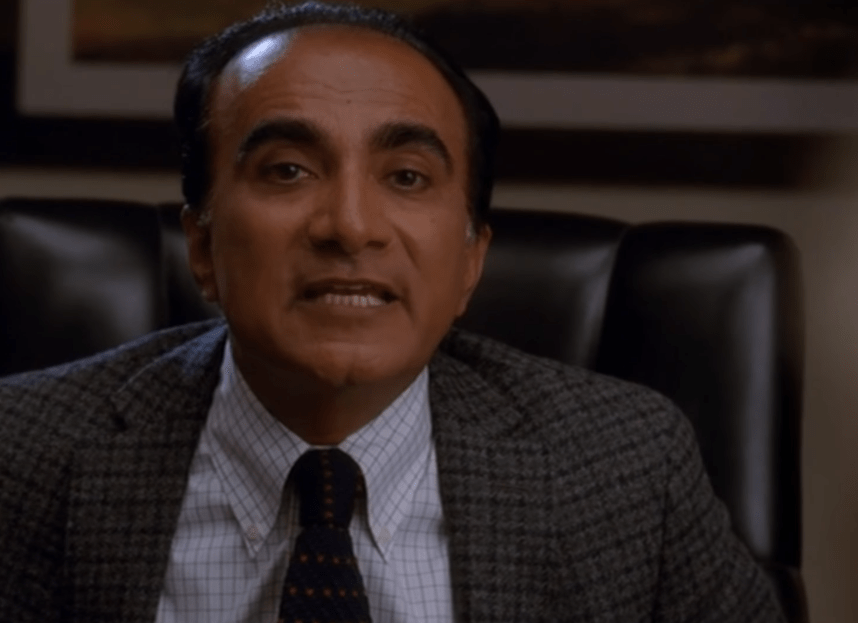High school life is often marked by a series of challenges, triumphs, and conflicts. In the quaint halls of McKinley High, one confrontation stands out – the heated argument between Emma Pillsbury, the meticulous and eccentric guidance counselor, and Principal Figgins, the head of the institution. The clash of perspectives in this encounter sheds light on the complexities within the education system, the importance of individuality, and the struggle for understanding.
Setting the Scene
McKinley High, a typical American high school, was buzzing with activity on a crisp Monday morning. The aroma of cafeteria food wafted through the air as students hustled to their classes. Unbeknownst to the majority, a storm was brewing in the administrative offices. Emma Pillsbury, known for her unwavering dedication to order and cleanliness, found herself at odds with the school’s principal, the affable but often indecisive Principal Figgins.
The Trigger
The genesis of the conflict lay in a seemingly innocuous proposal put forth by Emma – an initiative to revamp the school’s counseling program. Emma believed that a more personalized and holistic approach was necessary to cater to the diverse needs of the student body. However, Principal Figgins, a man of traditional values, was hesitant to embrace change, especially when it came to administrative matters.
Also Read: Avril Lavigne Children: Does Avril Have Children?
Emma’s Vision
Emma Pillsbury, with her signature floral dresses and meticulous organizational skills, was passionate about the well-being of McKinley High’s students. Her proposal aimed at transforming the counseling program into a more student-centric service, providing tailored support for academic, emotional, and social development. Emma argued that a personalized approach would help students navigate the complexities of adolescence more effectively, fostering a positive and inclusive school environment.
Principal Figgins’ Concerns

Principal Figgins, on the other hand, was cautious about altering the established system. He feared that drastic changes might disrupt the school’s equilibrium and believed that the existing counseling structure was sufficient. Figgins, a man of routines and protocols, struggled to see the merit in Emma’s vision. The clash of ideologies and priorities was evident as Emma sought to break away from the conventional, and Figgins clung to the familiar.
Also Read: Who Is Peso Pluma Dad?
The Meeting
The tension between Emma and Principal Figgins reached its peak during a scheduled meeting in Figgins’ office. The room, adorned with framed motivational posters and neatly arranged paperwork, served as the battleground for their clash of perspectives. Emma entered with a folder full of charts, statistics, and research supporting her proposal, while Figgins reclined in his leather chair, skeptical but willing to hear her out.
Emma’s Opening Statements
As Emma began her presentation, her eyes sparkled with determination. She delved into the statistics that highlighted the increasing academic stress and emotional challenges faced by McKinley High students. Emma argued that a more proactive counseling approach would not only enhance academic performance but also contribute to the overall well-being of the student body. She emphasized the importance of recognizing individual strengths and weaknesses, tailoring guidance to meet the unique needs of each student.
Figgins’ Resistance
Principal Figgins, though attentive, remained unconvinced. He raised concerns about the practicality of implementing such a program, citing budget constraints and the potential disruption to the school’s routine. Figgins questioned the need for personalized counseling when the existing system, albeit traditional, had been in place for years without major issues. He urged Emma to consider the broader implications of her proposal and its impact on the school’s stability.
Emma’s Emotional Appeal
Undeterred by Figgins’ skepticism, Emma shifted her approach. She shared personal anecdotes of students she had counseled over the years, illustrating the transformative power of individualized support. Emma’s emotional appeal resonated with Figgins on a human level, forcing him to confront the faces behind the statistics. Emma argued that McKinley High had a responsibility not just to educate but to nurture the potential within each student.
Also Read: 21 Best White Rappers You Should Listen To in 2024
Figgins’ Counterarguments
Principal Figgins, realizing the weight of Emma’s emotional appeal, countered with pragmatic concerns. He questioned the scalability of Emma’s proposed program, expressing doubts about its effectiveness on a larger scale. Figgins also highlighted potential resistance from teachers and parents accustomed to the existing system. The clash of ideals intensified as Figgins defended the status quo, while Emma championed a vision for a more compassionate and responsive educational environment.
The Role of Students
In the midst of the heated debate, the perspective of the students emerged as a crucial element. Emma argued that a student-centric counseling program would empower the youth to actively engage in their personal and academic development. She envisioned a system where students felt heard, understood, and supported, paving the way for a more inclusive and harmonious school community. Figgins, though sympathetic to the students’ well-being, questioned the feasibility of accommodating individual needs on a broader scale.
Common Ground
As the debate reached its zenith, Emma and Figgins found themselves at an impasse. The clash of perspectives seemed insurmountable, with each party entrenched in their beliefs. However, in the midst of the discord, a glimmer of common ground emerged. Both Emma and Figgins shared a genuine concern for the students’ welfare, acknowledging the need for a balance between tradition and progress.
Compromise and Collaboration
Recognizing the need for a middle ground, Emma and Figgins began exploring compromises. They discussed the possibility of a phased implementation of Emma’s proposal, allowing for a gradual transition that minimized disruption. Figgins, while still cautious, expressed willingness to allocate resources for a pilot program to test the viability of Emma’s vision. The clash of perspectives gave way to a collaborative spirit, as both parties worked towards a solution that honored the values of tradition and innovation.
The Aftermath
The resolution of the conflict between Emma and Principal Figgins marked a turning point for McKinley High. The school embarked on a journey towards a more student-centric counseling program, blending the best of tradition with the adaptability of progress. Emma’s unwavering dedication and Figgins’ pragmatic leadership contributed to the evolution of the school’s support systems, creating an environment where students felt seen, heard, and valued.
Also Read: Story of King Javien Conde: Everything You Need to Know
Conclusion
The clash of perspectives between Emma Pillsbury and Principal Figgins at McKinley High showcased the inherent challenges within the education system. Emma’s passion for individualized support clashed with Figgins’ adherence to tradition, creating a narrative that resonates with schools worldwide. In the end, a compromise was reached, highlighting the importance of finding common ground in the pursuit of educational excellence. The clash between Emma and Figgins ultimately became a catalyst for positive change, proving that even in the face of conflicting ideologies, collaboration and compromise can pave the way for a brighter future in education.





